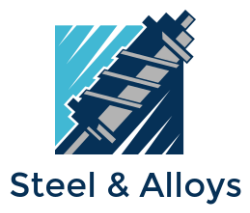EN 36 is a widely-used steel grade known for its exceptional combination of mechanical properties, making it ideal for a variety of applications. In this comprehensive guide, we'll delve into the specifics of EN 36 steel, including its country of origin, standard and specification, chemical composition, mechanical and physical properties, equivalent steel grades, applications, heat treatment processes, and available sizes and conditions.
Country, Standard, and Specification:
EN 36 steel, also known as 655M13 or 832M13, is a British steel grade. It is covered by the British Standard BS 970, which specifically falls under BS 970 Part 3: 1991.
Chemical Composition:
EN 36 steel has a unique chemical composition that imparts its remarkable properties. The key elements and their percentage ranges are as follows:
- Carbon (C): 0.35% - 0.45%
- Manganese (Mn): 0.45% - 0.70%
- Silicon (Si): 0.10% - 0.35%
- Phosphorus (P): 0.05% (max)
- Sulfur (S): 0.05% (max)
- Chromium (Cr): 1.30% - 1.70%
- Nickel (Ni): 0.35% - 0.85%
Mechanical & Physical Properties:
EN 36 steel is valued for its excellent mechanical and physical properties, including:
- Tensile Strength: 700 - 850 MPa
- Yield Strength: 460 MPa (min)
- Elongation: 16% (min)
- Hardness: 197 - 229 Brinell (HB)
Equivalent Steel Grades:
EN 36 steel is recognized by various equivalent steel grades in different international standards, including:
- BS: 655M13, 832M13
- AISI/SAE: 9315, 3310
- DIN: 17NiCrMo6-4
- Werkstoff No: 1.6587
- AFNOR: 16NCD17
- JIS: SNCM431
- IS: 16CrNi4
- GOST: 18Х2Н4МА
Applications & Uses:
EN 36 steel is widely used in the manufacturing of various components and parts, especially in industries where high strength and wear resistance are crucial. Its applications include:
- Gears and shafts
- Crankshafts
- Camshafts
- Fasteners
- High-stress structural components
Heat Treatment Process:
The heat treatment process is critical to achieve the desired properties in EN 36 steel. It typically involves:
- Annealing: Heat to 790-810°C, then slowly cool in the furnace.
- Hardening: Heat to 840-870°C, followed by quenching in oil.
- Tempering: Reheat to 150-250°C, leading to the desired hardness and toughness.
Size Ranges & Sections Available:
EN 36 steel is available in various forms and sizes, including:
- Rounds: From 12mm to 120mm
- Flats: 10mm x 3mm to 150mm x 50mm
- Squares: 12mm to 75mm
Conditions:
EN 36 steel is commonly supplied in the following conditions:
- Hot Rolled
- Forged
- Annealed
- Normalized
Conclusion:
EN 36 steel, covered by the British Standard BS 970, offers a versatile and high-performance material with a well-defined chemical composition, excellent mechanical properties, and a range of equivalent grades. Its various applications and availability in different sizes and conditions make it a popular choice across industries. Understanding EN 36 steel is essential for engineers, manufacturers, and anyone looking to harness the benefits of this remarkable steel grade.
